The difference between hybrid inverters
and battery inverters for energy storage
You shouldn’t have to be an electrical engineer to save on your energy bills and reduce your carbon footprint.
Knowing what is available to you in the world of renewable solar energy is key to benefiting from the latest and greatest in photovoltaic (PV) technology. Inverters in particular are essential to saving you energy (and money) by making your solar power more efficient in the long run.
But how can you find the best inverter for your solar system without wading through technical manuals and intricate product catalogs?
To get you started, we’ve put together a comprehensive guide to energy storage, including an overview of what energy storage inverters actually are, the different types – from hybrid inverters to battery inverters – as well as what Hoymiles can provide for your PV energy needs.
- What are energy storage inverters?
- What is a hybrid inverter?
- Where are hybrid inverters used?
- What hybrid inverters does Hoymiles provide?
- What is a battery inverter?
- Where are battery inverters used?
- What battery inverters does Hoymiles provide?
- What is the difference between a hybrid inverter and a battery inverter?
What are energy storage inverters?
You may already know that regular PV inverters convert direct current (DC) energy to alternating (AC) energy.
The main difference with energy storage inverters is that they are capable of two-way power conversion – from DC to AC, and vice versa.
It’s this switch between currents that enables energy storage inverters to store energy, as the name implies.
In a regular PV inverter system, any excess power that you do not consume is fed back to the grid. You could regard the grid as your power backup, because after sunset, when the PV inverter no longer works, you can still drain power from the grid.
But what if the grid is down? You’re left without power.
That’s where the superpower of energy storage inverters really comes into play.
To store energy for yourself – in case of a blackout or extreme weather when the grid is down – you need to store it locally.
But you can only store DC power in the battery.
So, you’ll need an energy storage inverter to convert the AC power that your PV inverter produces back into storable DC power.
Now that we have the basics down, let’s move on to the two types of energy storage inverters that you’ll come across on your search – hybrid inverters and battery inverters.
What is a hybrid inverter?
A hybrid solar inverter is similar to a standard inverter, but with an added benefit: it can also work with an AC source.
This differs from a PV inverter as the hybrid inverter has a battery port to enable two-way power conversion.
But that’s not to say that you need a battery – it’s possible to use hybrid inverters with or without one.
If you don’t connect a battery to the port, your hybrid inverter will work just like any regular solar inverter. In fact, some hybrid inverters even support generators to ensure you still have power supply even when you’re off-grid – whether that’s due to extreme weather conditions or a random power outage.
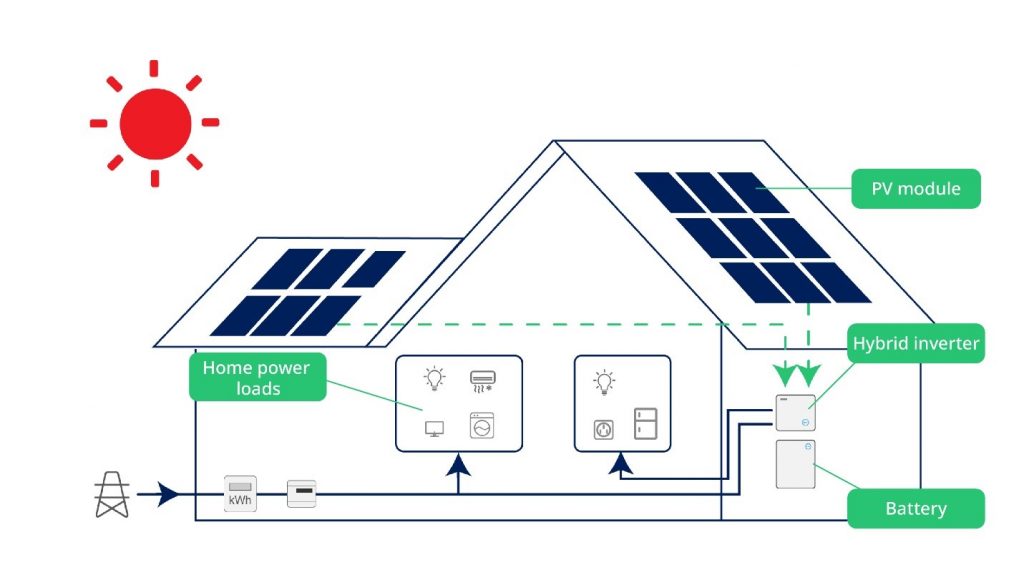
As it’s a DC-coupled solution, you only require one inverter. This is because DC power from the solar panels is directed straight to the batteries, meaning it will only be converted once, to AC, to power appliances and feed the grid.
However, it does mean that you will need a charge controller to limit the amount of electricity entering the batteries, preventing overcharging and damage over time.
Hybrid inverters are unique in that they offer a higher DC-to-AC ratio , but with no energy loss , as excess power produced by your solar system will be stored in the battery.
But what does a DC-to-AC ratio mean? In short, it’s the ratio of the installed capacity of your PV modules to the rated output power of your PV inverter.
A higher DC-to-AC ratio can in some situations cause energy loss at midday when the sunshine is at its strongest. That’s because the DC power produced by the solar panels can be higher than the rated output power of the inverter, leading to energy loss (known as “clipping”).
But with hybrid inverters, the battery can store excess energy, so a higher DC-to-AC ratio will not result in energy loss.
Where are hybrid inverters used?
Hybrid inverters are most commonly used in string solar systems for residential homes.
For large roofs, you can install a string system, where the hybrid inverter will play the role of a string inverter, but with an additional battery port.
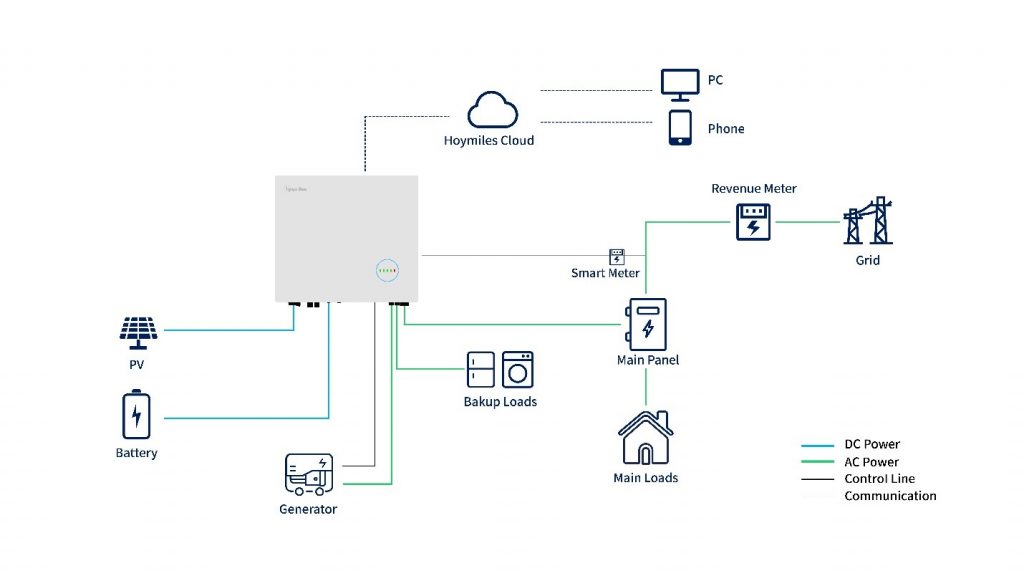
If you’re starting your system implementation from scratch, and you want to achieve both solar and storage in one go, then hybrid inverters make the most reasonable choice.
What hybrid inverters does Hoymiles provide?
Hoymiles offers a selection of hybrid inverters which work both on-grid and off-grid. This seamless switch between on-grid and off-grid mode allows you to back up your power ready for when you need it.
When used alongside a power generator, you can utilize the Hoymiles hybrid inverters as a long-term off-grid solution.
All of the Hoymiles hybrid inverters are compatible with batteries from mainstream manufacturers. They are built for everyday use, are easy to install , and include a visualized display of system information on the Hoymiles monitoring system – available via the web portal and mobile app to keep your eye on your energy wherever you may be.
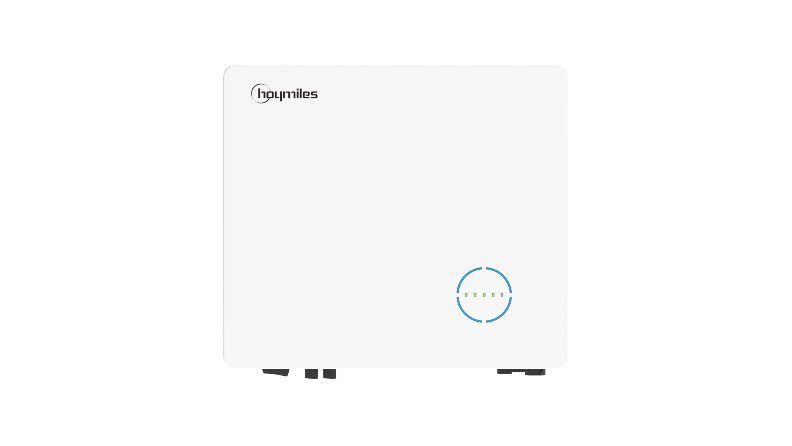
- Single-phase for lower energy requirements
- Power class from 3 kW to 6 kW
- Maximum efficiency: 97.6%
- Battery voltage range: 40V-60V
- Three-phase to support higher energy loads
- Power class from 5 kW to 12 kW
- Maximum efficiency: 97.6%
- Battery voltage range: 170V-600V
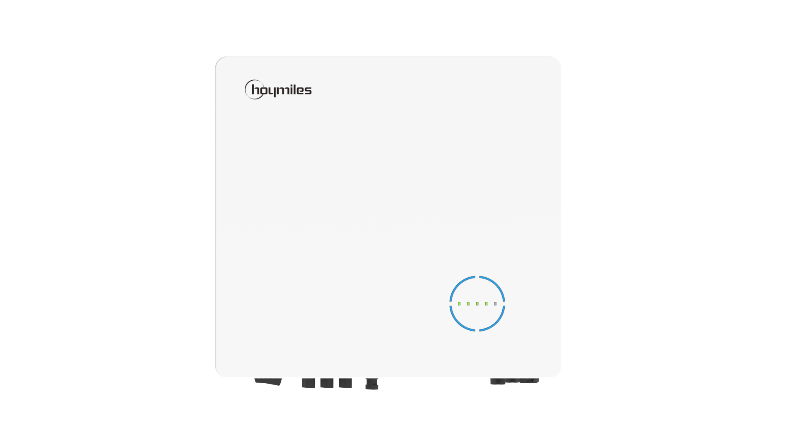
What is a battery inverter?
While battery inverters are very similar to hybrid inverters, the main difference is that a battery inverter only has a battery port, not a PV port.
It is also an AC coupling solution (unlike hybrid inverters, which are a DC coupling solution). This means that battery inverters convert the AC power your microinverters produce into DC power, which can then be stored in batteries. Hence the name ‘battery inverter’.
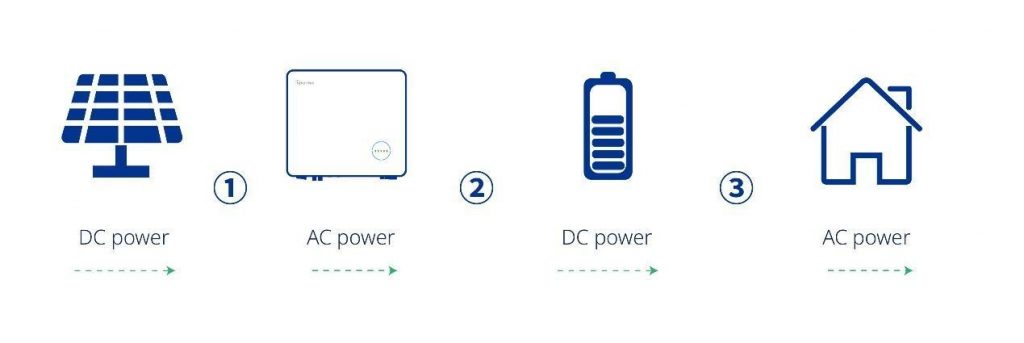
Battery inverters are mostly used for PV retrofit, either in string systems or microinverter systems.
For instance, if you already have a PV system, and want to add energy storage functionality, then you need a battery inverter to connect to your system for power backup – i.e. your battery.
It works like this:
- Your PV inverter converts the DC power your PV modules capture into AC power.
- Then, the battery inverter converts that AC power back into DC power, so it can be stored in the battery.
- Home appliances run on AC power. So, when you need to drain power from your battery, then the power needs to be converted back to AC to feed the appliances properly and safely.
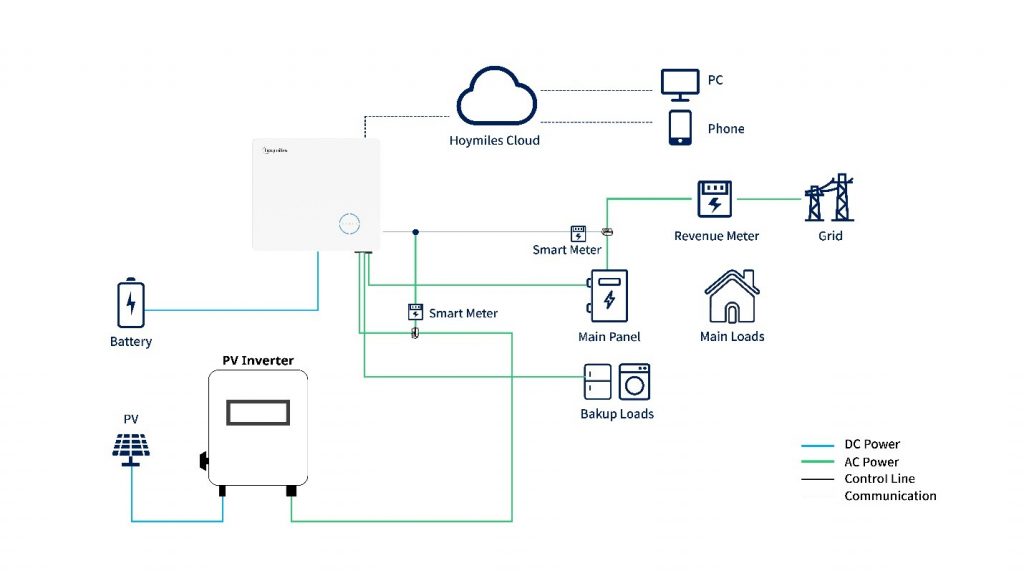
It’s important to note that this back-and-forth energy conversion between DC to AC power and back again can result in some power loss during the process.
Where are battery inverters used?
Battery inverters are suitable for solar systems that need to add an energy storage function. As a result, they are mostly used for larger residential properties, as well as commercial and industrial properties.
Larger battery inverters can also be used in large-scale energy storage power stations, where conserving power for use during outages is essential.
What battery inverters does Hoymiles provide?
Hoymiles offers a range of battery inverters that are designed for residential homes, that can be used alongside solar inverters and batteries from major manufacturers.
Our battery inverters are unique in that they can keep your solar power working even in off-grid mode, so you will never be without power when you need it.
Like the hybrid inverters, our battery inverters are built for everyday use are easy to install, and include the visualized display of system information through the Hoymiles monitoring web portal and mobile app.
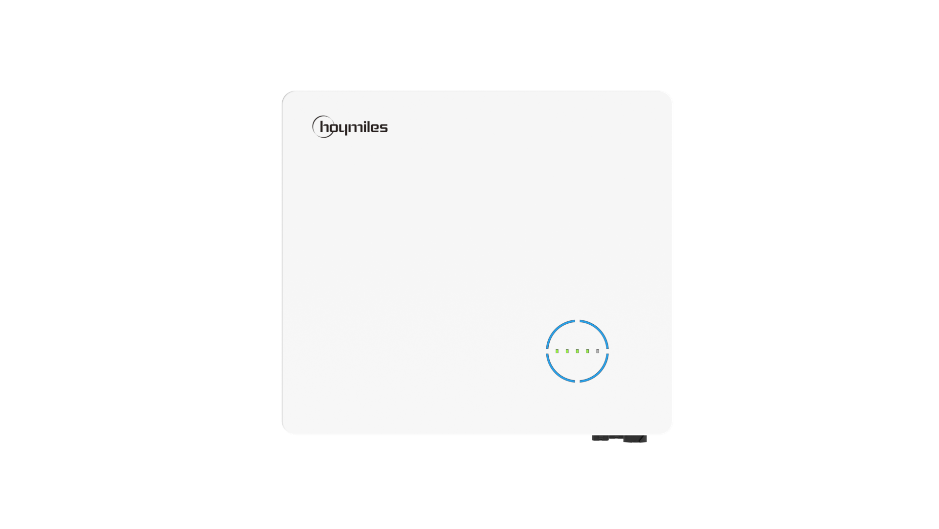
- Single-phase for lower energy requirements
- Power class from 3 kW to 6 kW
- Maximum efficiency: 95.2%
- Voltage range: 40V-60V
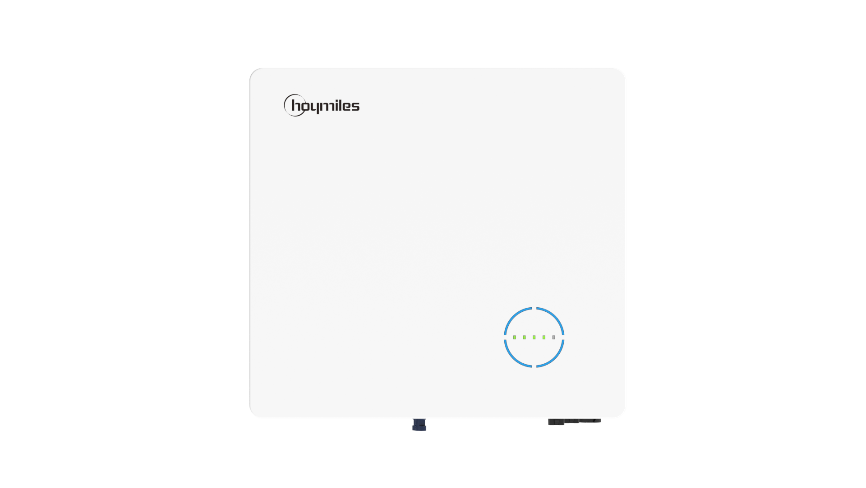
- Three-phase to support higher energy loads
- Power class from 5 kW to 10 kW
- Maximum efficiency: 97.5%
- Voltage range: 170V-600V
What is the difference between a hybrid inverter and a battery inverter?
Whether you choose a hybrid inverter or a battery inverter for your energy storage requirements, you can feel confident that our Hoymiles energy storage inverters will help to conserve power when you most need it.
Here is a quick recap of the main differences between hybrid and battery solar inverters:
| Hybrid inverters | Battery inverters |
System efficiency | Higher self-consumption ratio, higher utilization ratio of PV | Certain power loss during energy conversion |
Installation scenario | Brand-new installation | Already have PV inverter and want to have a system retrofit |
Coupling | DC-coupling solution, | AC-coupling solution |
System components | PV modules | PV modules |
